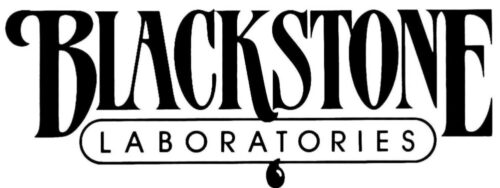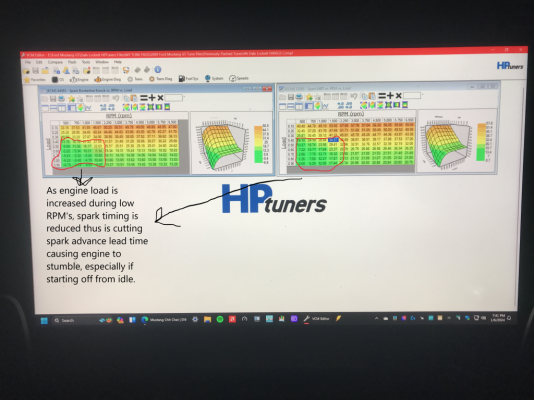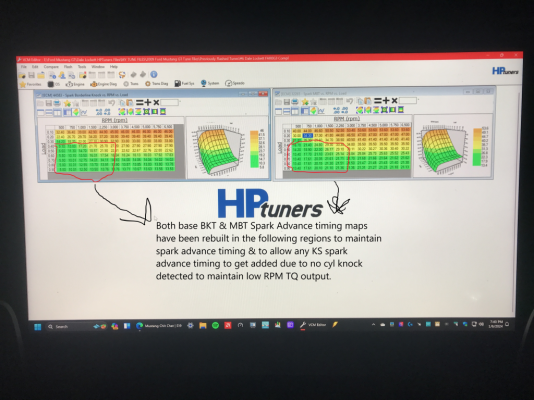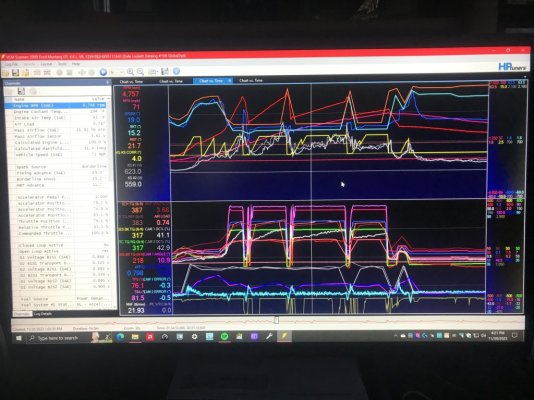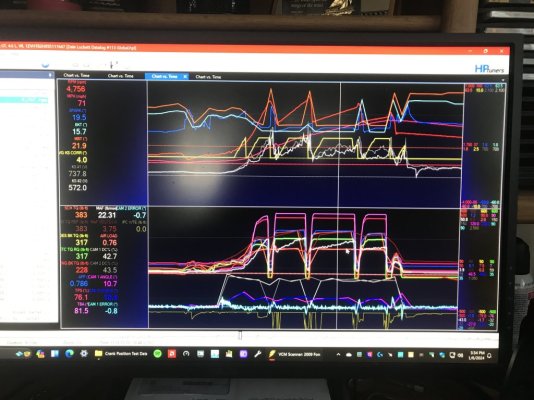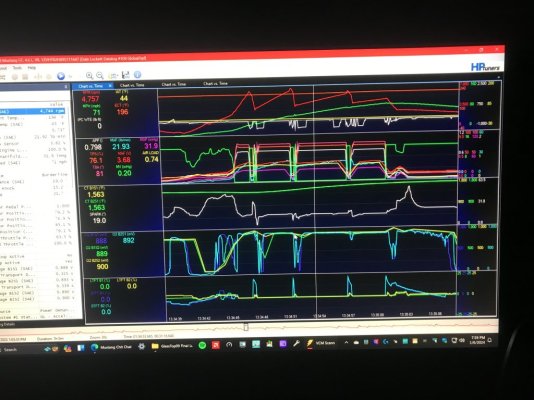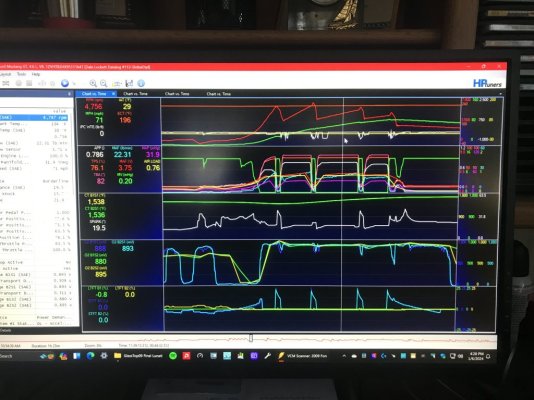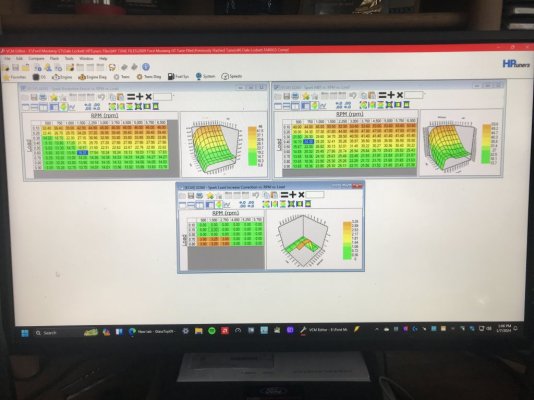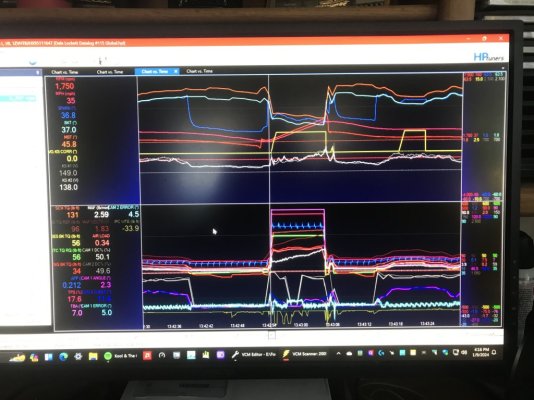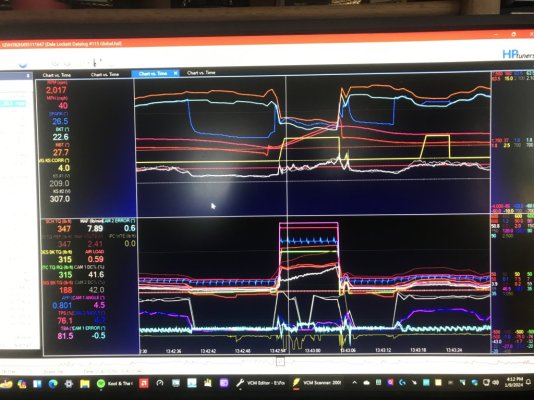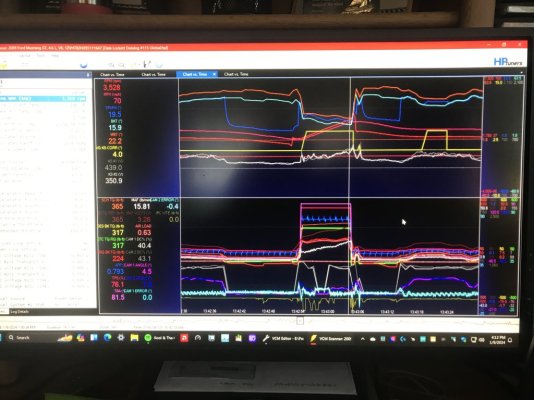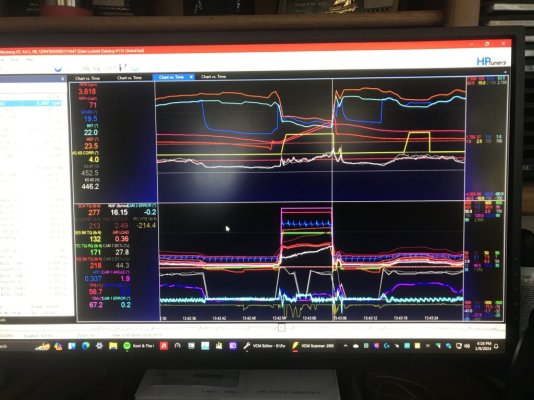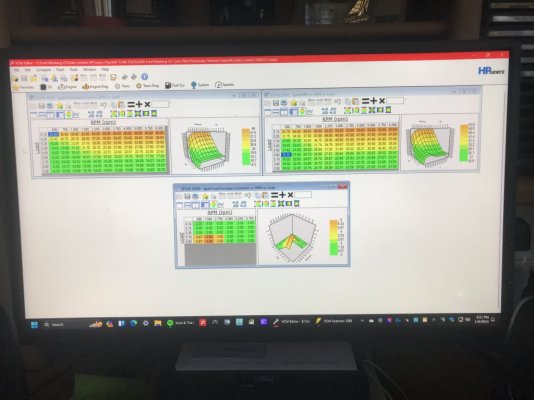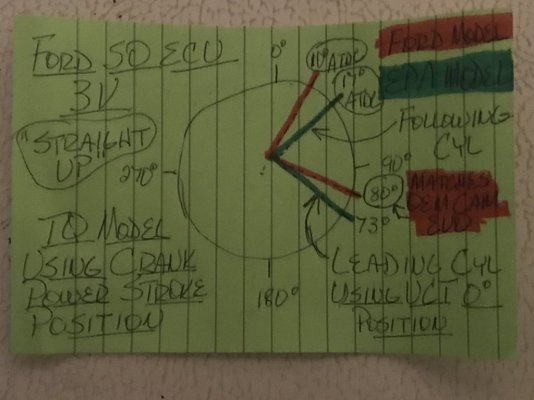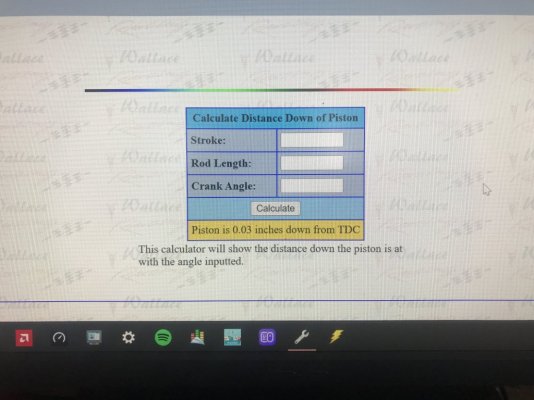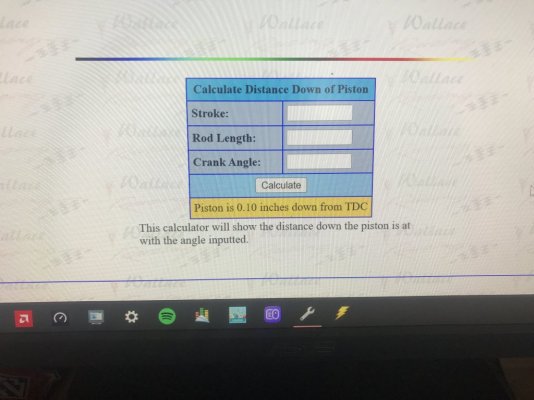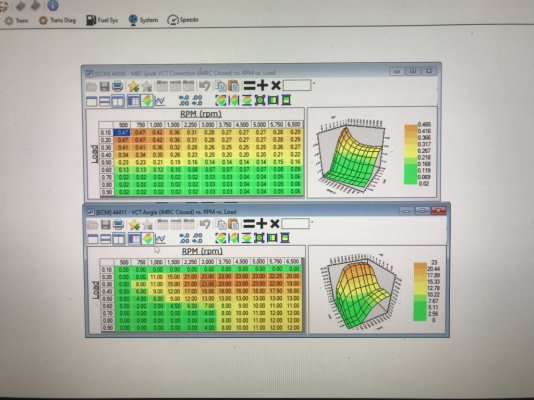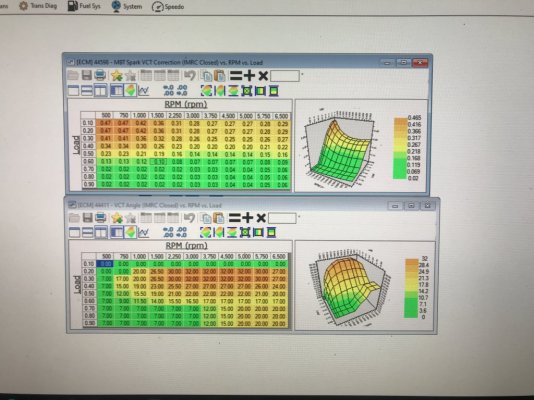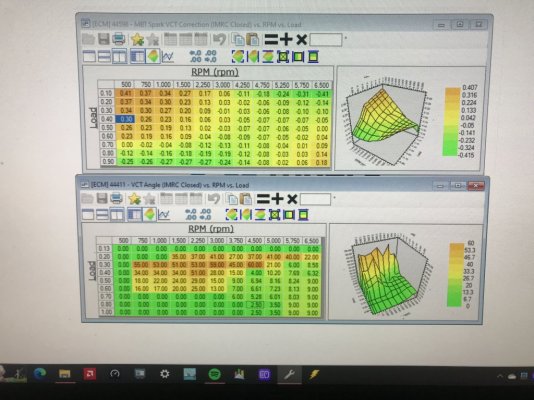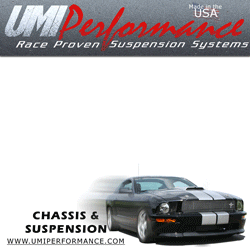Many years ago when I was building and racing my on car, I used a degree wheel and dial indicator to confirm the cam specs (cam card) is accurate. I have yet to see a modern camshaft not match up with the specs listed. I have even installed cams advanced & retard 2-4 degrees usually done at the crank since some cams already come ground with an advance built in and all performed flawlessly. If I every do another cam swap I will check it with the degree wheel and dial indicator just to be sure but I have simply just aligning the timing marks more times than I can remember and all have perfectly worked for me 100% of the time.
Regarding piston to connecting rod ratio which is essential to volumetric efficiency… I have played with Chevy 383 strokers in the past. The same engines with the 5.7 rod produce less torque and had a narrow powerband compared to the same engine with 6.0 connecting rod and good power from idle all the way to redline.
Well then JC SSP, I don't have to say anything as from an old proverb............"it takes real to discern real"...............meaning that you already know & understand exactly what all of this means when properly applied using the DEPS version of VCT that these 3V's are using........as it is simply applying old school cam-to-crank "degreeing" using modern electronics according to the basic laws of physics concerning force application to a simple lever.........the real power is ALWAYS located within the CRANKSHAFT stroke\con rod length vs the cyl bore size.....IOW's the engine's DISPLACEMENT. A camshaft is the TOOL used to line up the 4 main cam timing events....IVO, IVC, EVO, EVC........at the optimum crank throw timing events that will set the engine up to produce the most TQ twisting force that can be created thru the cyl bore size which dictates the piston's total surface area that the cyl pressure is exerted upon.....psi = pounds per sq in area = force.
The cyl pressure part most understand..........the TQ leveraging dynamics thru the crankshaft thus engine displacement is what is going over most folks heads........been conditioned to think this is all due to the cams being used........when it isn't. The cams have a function to serve in this......but aren't the generators of this TQ output.
With this 3V using VCT, it is not the tuner's job to optimize the engine's TQ output......it's
the tuner's job to use VCT to set the cam EVO timing to match up to the crankshaft's optimum throw in degrees which is 80* BBDC which will always set the following cyl's crank throw at the optimum 10* ATDC position so that the cyl pressure can reach it's max pressure buildup from the spark timing used at this same point at the right time, every time, so that the max TQ twisting force can be exerted thru the crankshaft, trans, driveshaft, axle to wheels............regardless of the cam's adv dur cam timing profile being used. Then just simply phase the cam's EVO timing using VCT according to engine RPMs & load to remain within the 80* BBDC to 65* BBDC crank timing window to retain optimum crankshaft TQ twisting force application to the rest until redline. Then use the rest of the Ford-provided SO ECU's OS coding\tune calibration mapping that Ford created specifically to counter the effects from retarding the cam IVC timing when retarding the cam EVO timing to maintain the optimal cyl pressure generation (which most tuners either disable or leave in Ford's OEM layout which neuters this) and\or take advantage of other Ford-provided OS coding\tune calibration mapping that can further enhance off idle, low RPM TQ output that the Ford engineers already knew would be an asset but due to their corporate requirements for marketing\warranty purposes had to disable or "neuter" this coding........but ALL of it is fully operational within the OS programming......just "sidelined".
Up to a tuner to figure all this out then how to optimally apply it............that's where the legwork comes in..........and where most folks (not all) who are commercial don't\won't take the time to do the work to figure this stuff out, figure out all the optimal tune calibration mapping layouts to take advantage of HP\TQ output opportunities as this takes time & effort to do........the knowledge level is the leverage.......the more you have the easier & faster you'll get there w\ less miscues along the way, the less you have the more difficult & longer it'll take & the more miscues\mistakes will be made........thus why the term "good enough" is usually the go to level......doesn't mean the tuning is correct\optimal, just means it is good enough for the tuner's time they put into tuning to get by while keeping the customers in the dark by deflecting most of the time to the customer being at fault when tuning issues arise\noted due to the customer not being in the know thus can't effectively counter............
Yep, I was there in that position at 1 time like the rest of all customers.............but not anymore.
Since the Ford OEM camshafts cam EVO timing at VCT 0* is set @ 80* BBDC crankshaft timing point.......any other camshaft's cam EVO timing point.......regardless if it is set at VCT 0* earlier than this 80* BBDC crankshaft point.......is phased to match this same crankshaft's 80* BBDC throw timing point.....then, as long as the
cyl pressure generated onto the piston top at the same 10* ATDC (or 170* BBDC) crankshaft timing point in the same power stroke cycle is the same, the engine
WILL PRODUCE THE SAME AMOUNT OF GENERATED TQ TWISTING FORCE as the Ford OEM cams..........because this ISN'T about the CAMS........it's about optimizing the CRANKSHAFT THROW LENGTH\CON ROD LENGTH & PISTON TOP AREA during crankshaft rotation....IOW's optimizing the engine's current DISPLACEMENT when it comes to optimizing TQ output.......period.
The optimal crankshaft TQ degree window is not large....is a small window that must be maintained or TQ generation will suffer........
Basic Mechanical Engineering 101...........is also the reason why the Ford engineers provided the .006" lift adv dur seat-to-seat cam timing profiles of both the OEM Ford cams AND their FRPP Hot Rod cams..........if you don't know where the optimum displacement point for TQ output using VCT is, then how are you gonna know where to set the FRPP Hot Rod cams up in the VCT cam retard tables to output the same?
Outside of just throwing mud up against the wall until some of it sticks..........?
This why I chose to go w\ the science............once applied properly, all the optimum points will be easily known thus easily applied thru VCT w\o a lot of fuss while practically guaranteeing operational success as all the "guesswork" will be removed up front.........for these FRPP Hot Rod cams & any other non-OEM performance cams used.........if the cam manufacturers designed their grinds to optimize around the same crankshaft throw's 80* BBDC timing point..............as given them by the Ford specs around Ford's vers of DEPS VCT being used w\ these 3V's.
Is also the reason why I also said at the beginning of this thread, I'm not gonna argue w\ anyone on this BBS concerning any of this either...........I don't need to prove anything to anyone else but myself.........I already am VERY familiar w\ the sciences\mathematics behind all of this, just needed to figure out what Ford was actually doing\intending by giving the cam timing data as they did..........after that the rest is history..........as Nike has phrased......."Just do it."
I post the before\after data gained from my work & let it do all the talking for me.
The expected outcome w\ my engine performance operating under the current Lunati VooDoo #21270700 cams AND the upcoming FRPP Hot Rod cams is inevitable from here on out.............just up to me to initiate\execute.
The rest of the info\learning I'm getting from ole Ben Alameda @ Ben Alameda Racing thru his videos & from other sources is just affirmation of what I've already learned\figured out & some damn good dynamics\info I wasn't aware of to apply by me further making use of the Ford SO ECU's OS coding\tune calibration to apply it within the OS programming boundaries to further optimize my engine's overall performance while not causing code process contentions creating unwanted side effects that can cause unwanted potential engine operational issues.......what the masses call "thinking outside of the box".
"This is why we test".........as Richard Holdener always quotes..........
This is why you listen to these old long-time proven racers\engine builders when they're putting out their hard earned wisdom on these YouTube videos.............check out Ben's "About" button in the description in his videos.......this man is well-known as a winning racer & engine builder for decades in the California\West Coast racing circuits.......so he's got the chops & knows some stuff............kinda like you JC SSP..........also is a Veteran so I salute him & his family for their service as well.
You're just being quiet & reserved w\ yours.....................

Ford gave folks the recommended optimum WOT VCT cam retard timing points up front--all of it is based off the same crankshaft's 80* BBDC crank throw timing\10* ATDC power stroke TQ positioning--to use to optimize WOT TQ outputs, but they figured tuners would know the basic dynamics in order to use the rest (the .006" lift adv dur seat-to-seat cam event timing data) to optimize off idle, low RPM to mid-range TQ outputs from a position of TQ output w\ VCT usage as they saw fit...................
It is the CAM MANUF's job to make sure that the other 3 cam timing events...cam IVO, IVC & EVC.....are positioned\optimized on the camshafts along w\ the cam lobe shape profiles & lift\duration criteria to work in unison w\ the crankshaft's piston positions as set in rotation by the crankshaft's stroke & con rod lengths in crank degrees off the same 80* BBDC crank throw degrees point that set the crankshaft thus piston positions within the cyl bores at the crankshaft's optimum 10* ATDC TQ generational positioning to further optimize this engine's TQ twisting forces by optimizing the A\F cyl filling thru intake velocity created thru optimizing the OL period using the exhaust gas negative pressure wave generated by the exhaust gas exiting velocity while the exhaust valve is still open when the intake valve is initially opened along w\ the cyl head's low lift flow potential to optimize the OL.....the earlier the cam IVO event occurs, the more opportunity for intake air mass to get moving & sped up to increase air velocity.....the later the EVC event occurs within a specific time window during the end of the OL period before the positive exhaust pressure wave rebounds back to the exhaust valve causing EGR helps to optimize intake air velocity creation thus optimize total A\F cyl filling or "the supercharging effect" after the EVC event has occurred & the piston is travelling down the bore during the intake stroke as air also has mass\weight so once you get it moving you're also generating inertia within it which will not allow the moving airmass to instantly slow down\stop once it has started moving at speed. Then the cam IVC event timing will determine 2 things......1.) the point at which actual mechanical airmass compression begins during the compression stroke & 2.) the amount of residual initial airmass compression occurring against the intake valve head from generated airmass inertia AND the slow initial upward motion of the piston starting to reduce the total amount of open cyl area as it is beginning to move up from BDC just before the intake valve completely closes against its seat........thus again, the "supercharging effect" w\o any mechanical assist.
Air is also considered to be a "gas" thus has compressible properties of it's own that also must be taken into consideration when max cyl pressure from ignition is also applied..........why the optimum window around the 10* ATDC crank throw TQ window is small......a few degrees either direction outside of the 5* ATDC to 15* ATDC is not favorable for optimum TQ output........too short of the 5* ATDC window can cause potential structural issues from overpressure, past 15* ATDC can\will cause too much cyl bore area exposure from piston top being too far down bore from TDC thus will lose cyl pressure exponentially as the piston top is further moving down the cyl bore & is slowly gaining piston speed as the crank throw length is increasing from rotation & no amount of spark timing increase will "fix" this......only will cause the remaining A\F burn to get more unstable thus cause detonation more easily......trying to regain compressed cyl pressures from combustion while "chasing the piston top moving down the bore" is a losing proposition concerning optimal HP\TQ output.........but far too many tuners are setting all this up unknowingly using VCT.......especially if engine is still in NA configuration.
FI usage can cover up a lot of basic tuning mistakes concerning TQ output that can go unchecked if the knowledge isn't known.........usually causing other issues........such as excessive emissions output from excessively "dirty" A\F combustion or fried catalysts from having to oxidize too much excessive CO & HC caused from this type of excessively "dirty" A\F combustion that some think is necessary to do in order to attain the HP\TQ outputs they desire thus is "good enough"...............when it really isn't in a fair majority of cases from my POV........
If a NA configured 3V is using total spark advance timing in excess of 23*-25*, this is a red flag of this setup AND potentially the knock sensors being too far desensitized to allow this much timing to be used...........
I posted a couple of datalogged test results demoing this by showing the WOT total spark advance timing used (30* BTDC) w\o knock & WOT EBTQ output (202 ft-lbs) from my tune optimized using 17* ATDC\73* BBDC crank throw positioning then advanced all the VCT map cam retard timing 7* to match the 10* ATDC\80* BBDC crank throw positioning that Ford used w\o any other changes made in tune calibration except the WOT total spark advance timing that I had to cut back due to KS's detecting cyl knock during the WOT hits until I got it to stop showing up at 19* BTDC but the WOT EBTQ output had increased to 218 ft-lbs in the process.............
This is why Brian Tooley @ BTR Racing keeps on making the case to stop focusing on LSA, ICL, ECL, GI advance, OL, etc so much......he NEVER SAID these points aren't important to know & to consider (that some others on YouTube are falsely accusing him of).........& put more focus\emphasis on using the 4 cam timing events (IVO, IVC, EVO, EVC) that when set actually CREATE the cam's LSA, ICL, ECL, GI advance, OL, etc you see on a cam card to optimize engine TQ thus output performance.........this is especially true when VCT is being used.......starting w\ the crankshaft's max displacement TQ generating degree points for power output THEN MATCH UP the cam's EVO timing events point to it......then keep it there as much & as long as possible across the entire engine RPM operational window............
The problem w\ this is that most folks don't have the chops or inclination to learn application of the science behind all of this.........just want the results.
Tis why I decided to make a .pdf w\ pictures.............I tried to give plausible explanations of the science & application of it w\ some pictures for visuals but 1 would still have to make some effort to apply it all............which I know is not what most folks really want.
Tuning industry isn't much different from working in the petroleum industry........everybody wants to be on top, but few will put in the necessary time & do the actual honorable work needed to get there........the rest try to run the old boy games & don't mind\care who or whom they have to step on to gain someone else's "favor" to then reach their "agendas".
I've got 34+ yrs served in the oil & gas industry to back up what I've posted.......don't have any inclination\desire to put myself back thru any of it......not now.
Only the few who will have no issue to put out a little effort.................
Ok I'm done.................at least I got it off my chest now!


